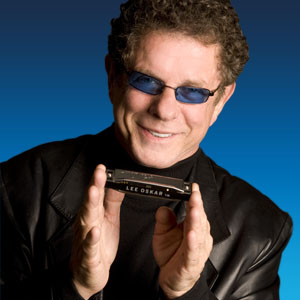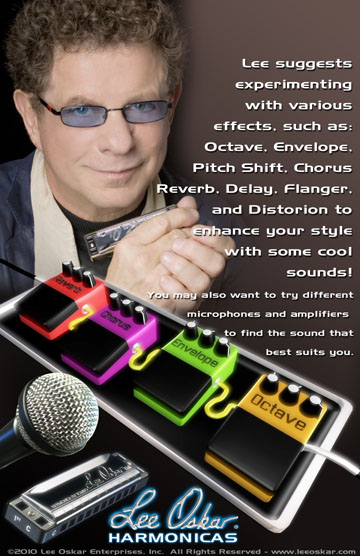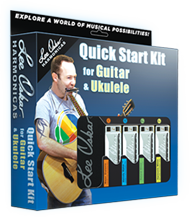- Home
-
Chitarra
-
Major Diatonic Folk, Country, Blues, Rock / Pop
-
Melody Maker™ R&B, Country, Reggae, Pop, Jazz, Latin, Afro, Clave, Ska
-
Natural Minor Blues minori, Reggae, Ska, Latino, Funk, R&B, Hip Hop
-
Harmonic Minor Gypsy, Yiddish, dell'Asia, dell'Europa orientale, Tango, Reggae
-
Major Diatonic Guida Rapida per Armonica e Chitarra
-
Melody Maker™ Guida Rapida per Armonica e Chitarra
-
Natural Minor Guida Rapida per Armonica e Chitarra
-
Harmonic Minor Guida Rapida per Armonica e Chitarra
-
Major Diatonic Accordi Guida Rapida per Armonica e Chitarra
-
Melody Maker™ Accordi Guida Rapida per Armonica e Chitarra
-
Natural Minor Accordi Guida Rapida per Armonica e Chitarra
-
Harmonic Minor Accordi Guida Rapida per Armonica e Chitarra
Guida Rapida Video per Armonica e Chitarra
Guida Rapida per Armonica e Chitarra
Accordi Guida Rapida per Armonica e Chitarra
-
-
Altri Strumenti
-
Ukulele
-
Major Diatonic Folk, Country, Blues, Rock / Pop
-
Melody Maker™ R&B, Country, Reggae, Pop, Jazz, Latino, Afro, Clave, Ska
-
Natural Minor Blues minori, Reggae, Ska, Latino, Funk, R&B, Hip Hop
-
Harmonic Minor Gypsy, Yiddish, dell'Asia, dell'Europa orientale, Tango, Reggae
-
Major Diatonic Guida Rapida per Armonica e Ukulele
-
Melody Maker™ Guida Rapida per Armonica e Ukulele
-
Natural Minor Guida Rapida per Armonica e Ukulele
-
Harmonic Minor Guida Rapida per Armonica e Ukulele
-
Major Diatonic Accordi Guida Rapida per Armonica e Ukulele
-
Melody Maker™ Accordi Guida Rapida per Armonica e Ukulele
-
Natural Minor Accordi Guida Rapida per Armonica e Ukulele
-
Harmonic Minor Accordi Guida Rapida per Armonica e Ukulele
Pianoforte
-
Major Diatonic Accordi Guida Rapida per Armonica e Pianoforte
-
Melody Maker™ Accordi Guida Rapida per Armonica e Pianoforte
-
Natural Minor Accordi Guida Rapida per Armonica e Pianoforte
-
Harmonic Minor Accordi Guida Rapida per Armonica e Pianoforte
Guida Rapida Video per Armonica e Ukulele
Guida Rapida per Armonica e Ukulele
Accordi Guida Rapida per Armonica e Ukulele
Accordi Guida Rapida per Armonica e Pianoforte
-
-
Supporto
- Lee Oskar - Video
- Risoluzione dei problemi comuni
- Quale chiave di armonica dovrei comprare?
- Riproduzione di base istruzione
- 1st & 2nd Position Playing
- Chords & Bending
- Armonica con effetti
- Manutenzione dell'armonica
- Layout notazione
- Tavola delle intonazioni (PDF)
- Tavole delle tonalità (PDF)
- Come pulire le armoniche
- Garanzia
Guida Rapida di supporto per Lee Oskar Armoniche
- Chi siamo
- Contatti

LEE OSKAR PRESENTA IL KIT QUICKSTART ED UN SITO WEB DIDATTICO CREATO APPOSITAMENTE PER CANTAUTORI E MUSICISTI DI OGNI GENERE, LIVELLO E STILE.
Il virtuoso dell'armonica Lee Oskar presenta il suo innovativo Kit Quick Start, creato appositamente per tutti i musicisti e cantautori. Il sistema è caratterizzato dal Kit Quick Start, supportato dal sito web educativo leeoskarquickguide.com.
Queste nuovi incredibili strumenti interagiscono insieme per aiutare tutti i musicisti a trovare che Oskar definisce come "magia, versatilità artistica e potenza dell'armonica."
Home
Harmonica With Effects

Lee Oskar feels that a player's sound is such a personal thing, that he doesn't really recommend a specific brand or model of equipment for everyone.
Try anything and everything and find the sound you like. Lee does recommend that you go to your favorite retail store to try out your choice of microphone and try out every amp on the floor! That's the best way to find what works for you.
Some people like a clean sound, some like a dirty sound, some like a distorted sound, etc. While you're at it, try out effect pedals too! Many products are marketed for the guitar but works just as well for the harmonica. It is important to choose your own microphone, for health reasons as well as your sound.
Incorporating all kinds of accessory equipment can be a lot of fun and can really spice up your playing, too.
Types of Effects that can be used with the Harmonica:
Reverb - Simulates the reverberation which naturally occurs within a given space. Settings vary from small room, concert hall, cave or even outer space. Some musical instrument amplifiers are available with the reverb feature built in. There are two main types of reverb available, spring and digital.
Delay - Delay is one of the simplest effects out there and one of the most valuable. A little delay can bring life to dull mixes, widen your instrument's sound, and even allow you to solo over yourself. Delay is also a cornerstone of other effects, such as reverb, chorus, and flanging.
Echo - An echo device, or delay device, is a signal processor used to simulate discrete reflections of sound. Echo devices have taken several forms, including tape delay, analog delay, and digital delay systems.
Chorus - Chorus effects can make a single instrument sound like a group of players. It adds a rich, lush, shimmering quality to your sound.
Leslie Effect - a vibrato effect similar to the Leslie rotating speaker used for electronic organs.
Harmoniser or Pitch-Shifter - Instrumental shifting allows one to change the pitch of a sound in real time.
Octave - Produces a tone one or more octaves below or above the pitch of the original tone. There are many types, Analog and Digital. Sometimes analog octave units will have difficulty in tracking the original signal and produce the desired octave.
Envelope Filter - An envelope filter is a bit like an automatic wah wah pedal. If you play a note with considerable attack you get a treble boost, and as the signal from the tone dies away the treble boost fades.
Flangers and Phase Shifters - Flangers and phase shifters (or phasers) get their sound by creating one or more alterations in the original sound signal's frequency.
Amplifiers - There are many differences between tube and solid-state amps. One of the main differences is that to some listeners, tube amplifiers tend to have a warmer, distorted sound. Solid-state amplifiers, which pass the signal in a more efficient manner, do not generate this distortion. Hence, solid state amplifiers can be said to produce a cleaner sound.
Microphones - Every type of microphone regardless of quality or internal components will have different sound and response characteristics. There is no one "correct" microphone to use for a particular type of music. It is important that you try different microphones until you find what works for your own individual sound and is the "correct microphone" for you. There are four common types of microphones which are grouped by their internal components. They are: Ribbon, Dynamic, Condenser and Crystal & Ceramic.
Equalizer - Equalizers boost or cut specific frequencies in a signal. The most common equalizers are tone controls. They tailor your sound to suit your music. They can also be effective in eliminating feedback for a particular amplifier and microphone combination.
DI Box - DI boxes perform three important roles: they provide a split audio path for an audio signal; one that goes to the amplifier input and another that goes to another device like a mixing console or sound system. They also provide electrical ground isolation between input and output, and they match the impedance of the source signal to that of the load. For example, a DI box with a high input impedance and a low output impedance may be used to match a microphone to the input stage of a mixing console.
Cleaning Your Lee Oskar Harmonica
Harmonicas are not exchangeable, refundable, or serviceable by retail stores due to health regulations. Once a harmonica has been played by any person or removed from a store (purchased), it is considered to be used merchandise, and must be returned to the manufacturer by the purchaser for warranty service.
An obvious reason harmonicas are not returnable is the fact that they are mouth-blown instruments, and as such are susceptible to being carriers of germs. Many times a "defective" harmonica needs nothing more than a good cleaning. Why not learn to clean and maintain your own instrument, thereby extending its life, and keeping your cost down?
Since the harmonica is a mouth-blown instrument, the very act of playing it contributes to the deterioration of tone quality, reed pitch and instrument life. The human breath carries with it many contaminants that build up residue on the reeds, inside cover plates, and the comb. Each person's body chemistry is different, and varying levels of sugar and other chemicals are present in the saliva. These contaminants, together with any others that may be present from eating or drinking, will collect within the harmonica and solidify on the various components. Any build-up on the reeds will obviously cause the pitch to vary. Since the build-up most often occurs on the free end of the reeds, the pitch will flatten.
Heavy residue on the reed plates themselves, as well as the inside surfaces of the cover plates, may cause a loss of tone brilliance. Particles of food, hair, and pocket lint often become lodged between a reed and the reed slot, interfering with the action of the reed. Careful cleaning at regular intervals will help prevent corrosion and preserve your harmonica, extending its life. Also, from an aesthetic point of view, frequent cleaning of the comb cavities and the outer surfaces of the cover plates, will keep your harp looking presentable.
Periodic rinsing of your Lee Oskar Harmonica, which has a plastic comb, in plain water will go far to keep it clean.
For a more thorough cleaning, the following suggested materials are readily available: Isopropyl (rubbing) alcohol, small spray bottle, lint-free cloth and small round brush (i.e. electric shaver cleaning brush).
Before disassembling your harmonica, spray a light mist of alcohol on both cover plates and wipe clean with a lint-free cloth.
Using the tools included in your Lee Oskar Tool Kit, carefully disassemble the cover plates and reed plates from the comb.
NOTE: Any time the cover plates are removed, it is of utmost importance that exposed reeds be handled very carefully, and not disturbed or snagged.
Cleaning the Reed Plates - spray both sides with alcohol and carefully wipe the plates clean. On the side of plates having reeds attached, wipe in parallel direction of reeds, starting at rivet end, being careful to not snag the free ends or disturb them in any way.
Cleaning the Comb - spray with alcohol and use small round brush to clean holes and chambers. Then wipe dry with cloth.
Cleaning the Cover Plates - spray with alcohol and carefully wipe inside and outside surfaces with cloth.
When all components are completely dry, reassemble harmonica according to instructions provided in the Lee Oskar Tool Kit Maintenance Manual. DO NOT play harmonica before all alcohol is dry. Inhalation of Isopropyl alcohol fumes may be harmful.
Warranty Info
THE CUSTOMER SERVICE AND WARRANTY INFORMATION LISTED ON THIS WEB SITE APPLIES TO UNITED STATES & CANADIAN CUSTOMERS ONLY. FOR CUSTOMERS OUTSIDE THE UNITED STATES & CANADA, PLEASE CONTACT YOUR LEE OSKAR DISTRIBUTOR.
Service Policy
Our service department takes great pride in providing fast, friendly warranty service for NEW Lee Oskar products. We stand behind our products 100%, replacing or repairing them free of charge if we find a manufacturer's defect. However, before assuming that one of our harmonicas is defective, please understand that many players, especially beginners, have problems getting the harmonica to play and sound as well as they would like. The 2&3 draw reeds are the most challenging notes to learn to play correctly. Almost always, it is improper playing technique that is causing the problem and not a defective harmonica.
If you are encountering a playing problem, especially with 2&3 draw, take a minute and read our helpful page entitled "Overcoming Common Playing Difficulties". We think you will find that with some simple instruction and guidance from us, together with a little practice on your part to develop the proper playing technique, you will be able to get all of the reeds to respond properly.
For more instructional material, visit our harmonica links page. There you will find many resources offering instruction on-line as well as in the form of classes, books, videos, etc.
ALL REEDS HAVE A LIMITED LIFE SPAN Harmonica reeds may eventually fail to react, go out of tune, or break off entirely from use and normal metal fatigue. Certain styles of playing can also fatigue reeds prematurely. We have no control over how our products are used after purchase, therefore our limited warranty covers only new harmonicas and/or new replacement parts.
CONSUMER SELF-SERVICE Our replacement reed plates (in every key) allow consumers to rebuild their own harmonicas economically, at about half the cost of a new instrument. Although we recommend that players learn to service their own harmonicas, we cannot guarantee our products after they have been disassembled or tampered with. Damaged goods from improper handling do not qualify for free replacement.
WE DO NOT OFFER REPAIR SERVICE FOR USED HARMONICAS
USA & CANADIAN WARRANTY
New Lee Oskar Harmonicas and replacement parts are warranted to be free of defects in material and workmanship at the time of purchase. Any NEW Lee Oskar products which appear to contain defects will be, at our discretion, repaired or replaced at no charge, providing they are shipped to us prepaid by the consumer, immediately after purchase. Proof of purchase and a brief description of the problem should be included. Continued usage will render this limited warranty on new products void.
This limited warranty does not cover damage resulting from accidents, misuse, alteration or normal wear. Due to health laws in some states, mouth-blown instruments are not exchangeable by retail stores.
Lee Oskar Enterprises, Inc., does not offer repair service for used harmonicas. The Lee Oskar Harmonica System allows players to service their own harmonicas with parts and accessories which are available at retail musical instrument stores.
Lee Oskar Enterprises, Inc.
PO Box 2210
Everett, WA 98213
Tel: 425-258-3579
RIMANI CON NOI
Lee Oskar Enterprises, Inc.
PO Box 2210
Everett, WA 98213
Tel: 425-258-3585
DISPONIBILE ORA!
Primo di una serie di Kit Lee Oskar Quick Start, il kit Guitar / Ukulele offre 4 armoniche, compresa la Major Diatonic (Tonalità DO) - per gli stili Folk, Country, Blues, Rock e Pop con tre accordature alternative per la riproduzione di una vasta gamma di generi musicali e stili.



